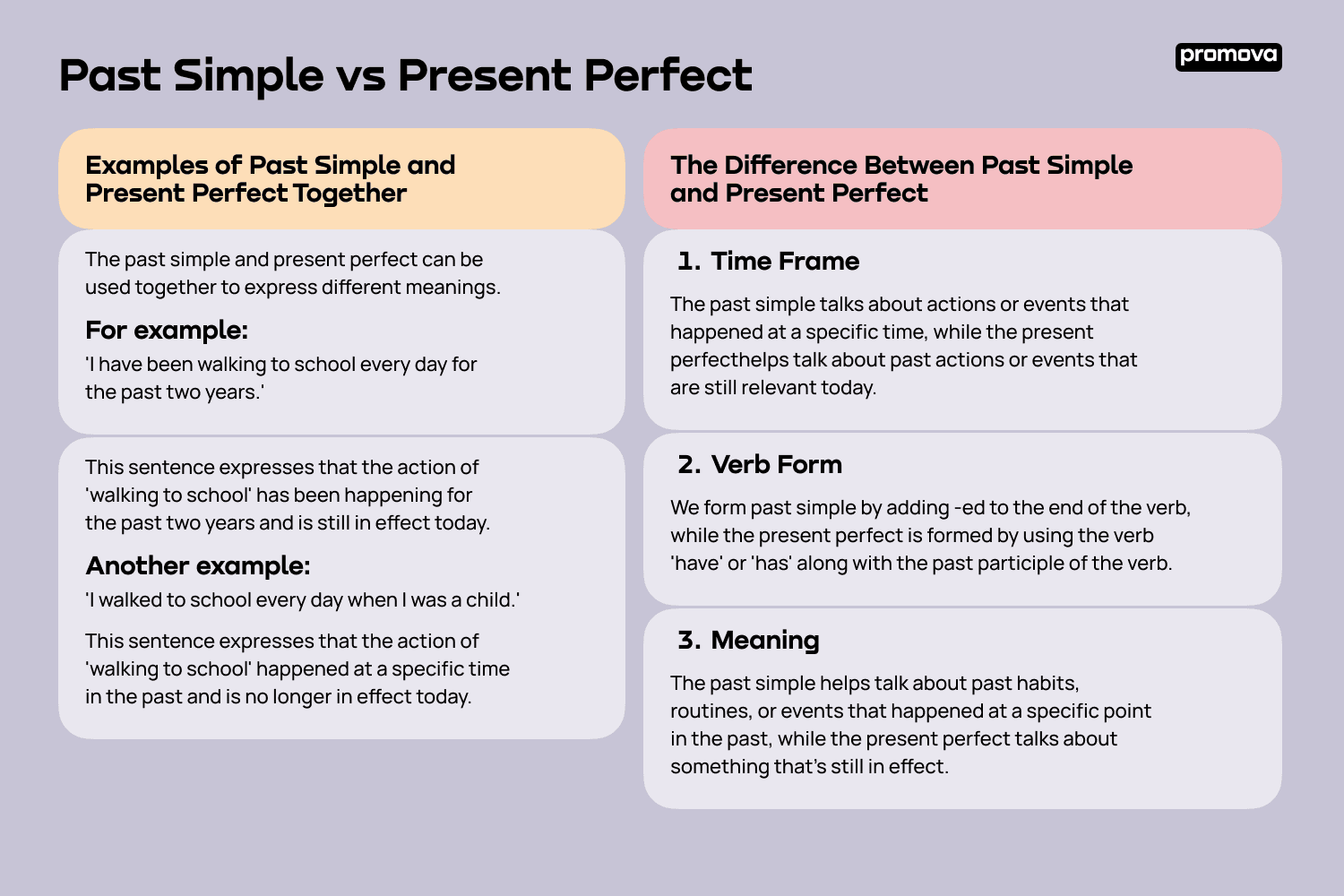When it comes to grammar, understanding the usage of past participle and present perfect can sometimes be confusing for learners of the English language. Both are related to past actions, but they serve different purposes in a sentence. Let’s delve into the distinctions between the two to gain clarity on their usage.
First and foremost, the past participle is a form of a verb that typically ends in -ed, -en, or -t. It is used in various tenses, including the past perfect and passive voice constructions. On the other hand, the present perfect tense is formed by using the auxiliary verb “have” or “has” with the past participle of the main verb. This tense is used to indicate actions that have occurred at an unspecified time in the past or have relevance to the present moment.
Past Participle vs Present Perfect
One key difference between past participle and present perfect is the timeframe in which they are used. The past participle is used to form the past perfect tense, which indicates an action that was completed before another past action. For example, “I had finished my homework before dinner.” In contrast, the present perfect tense is used to describe actions that have happened at an unspecified time in the past or have relevance to the present. For example, “I have visited Paris several times.”
Another distinction between the two is their impact on the sentence structure. The past participle is often used in passive voice constructions, where the subject of the sentence is not the doer of the action. For example, “The cake was baked by my sister.” In contrast, the present perfect tense focuses on the result or consequences of the action rather than the action itself. For example, “I have read that book.”
Furthermore, the use of past participle and present perfect can also differ based on whether the action is ongoing or completed. The past participle is used to indicate completed actions, while the present perfect tense is used for actions that are ongoing or have a connection to the present moment. For example, “She has lived in New York for five years.” The action of living in New York is ongoing and has a connection to the present.
In conclusion, understanding the nuances between past participle and present perfect is crucial for mastering English grammar. By recognizing the differences in usage and timeframe, you can effectively communicate past actions and their relevance to the present. Practice using both forms in various contexts to enhance your language skills and become a proficient English speaker.
